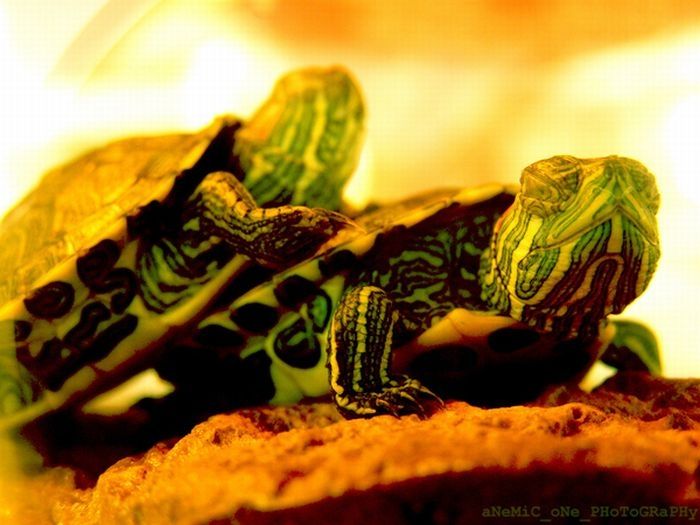|
|
Turtle's Face Emotion
|
Although many turtles spend large amounts of their lives underwater, all turtles and tortoises breathe air, and must surface at regular intervals to refill their lungs. They can also spend much of their lives on dry land. Aquatic respiration in Australian freshwater turtles is currently being studied. Some species have large cloacal cavities that are lined with many finger-like projections. These projections, called papillae, have a rich blood supply, and increase the surface area of the cloaca. The turtles can take up dissolved oxygen from the water using these papillae, in much the same way that fish use gills to respire.
Turtles lay eggs, like other reptiles, which are slightly soft and leathery. The eggs of the largest species are spherical, while the eggs of the rest are elongated. Their albumen is white and contains a different protein from bird eggs, such that it will not coagulate when cooked. Turtle eggs prepared to eat consist mainly of yolk. In some species, temperature determines whether an egg develops into a male or a female: a higher temperature causes a female, a lower temperature causes a male. Large numbers of eggs are deposited in holes dug into mud or sand. They are then covered and left to incubate by themselves. When the turtles hatch, they squirm their way to the surface and head toward the water. There are no known species in which the mother cares for the young.
Sea turtles lay their eggs on dry, sandy beaches. Immature sea turtles are not cared for by the adults. Turtles can take many years to reach breeding age, and in many cases breed every few years rather than annually.
|
|









